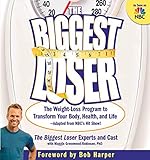 I picked up The Flavor Point Diet at the health food store. Somehow I thought it might have a grain of truth in it. The diet is based on the premise that if you limit the amount of flavors in a meal, you’ll feel full faster. The flavors in question are sweet, sour, salty and savory.
I picked up The Flavor Point Diet at the health food store. Somehow I thought it might have a grain of truth in it. The diet is based on the premise that if you limit the amount of flavors in a meal, you’ll feel full faster. The flavors in question are sweet, sour, salty and savory.
What I know for sure:
When I used to binge, I would eat for hours on end. I would constantly eat. How could I do that? Most people get full when they eat for five minutes straight, yet I could eat without stopping for hours. How did I do it?
I would start with whatever I was in the mood for, like potato chips. Once I started getting full of potato chips, I would move on to something sweet, like Reeses Peanut Butter Cups. After I felt full enough of Reeses, then I would change to something salty again like french fries. Sometimes I would even combine them by dipping my Wendy’s french fries into my chocolate Frosty.
I would keep switching from salty to sweet and back to salty and back to sweet until I couldn’t eat another bite. I used to do this on a regular basis and I even had an episode of this over the last Christmas holiday. The only way I could consume a ton of food like that was to switch between flavors.
How does this translate to a diet?
I don’t know. The method that David L. Katz, the author, uses is to limit flavors by day (such as a lemon day) in the first phase. The second phase limits flavors by the meal (Lemon Lunch, Pineapple Dinner) and finally in the third phase, you should be able to limit your flavors as you see fit.
I am really uncomfortable with diets that map out what I should eat for the next six weeks. I prefer the freedom of choosing what I want to eat at the time of the meal. There is no way for me to follow this diet to see if it would work for me because the mere idea of limiting my food to a six week plan sends me heading for a binge. Dr. Katz had a lot of people following this diet, raving about its efficacy and ease, but I can’t be one of those people. I know in theory, it would be good for me to limit the various flavors in my meals, but there is no way I could possibly follow his plan.
What’s good about the diet?
It seems to be nutritionally very sound and the recipes will bring a variety to your diet that you might be missing right now. We tend to fall into ruts when we are eating healthy, and this diet has enough interesting recipes to really shake up your diet plan. If you consider this book just a recipe book, it’s worth the cost all by itself.
What’s wrong with the diet?
I find the paranoid insistence that the food industry is purposely trying to make you fat a little far-fetched. Sure, there is salt in sweet foods. What probably happened is they tested various recipes and the taste tests came back, puzzling the food chemists. I can just imagine them talking to each other, “Can you believe the one they all chose? They like the one with salt in it. Why would they want so much salt in their cookies? It doesn’t make sense.” The other scientist says, “It doesn’t need to make sense. It just needs to taste good.”
The food industry isn’t trying to make people eat more food by adding more flavors. They are trying to make food that tastes good to the largest number of people. That’s their job, to make the tastiest food. The paranoia is an unnecessary scare tactic.
Should I buy this book and follow this diet?
This diet seems nutritionally very sound with plenty of whole grains, lean protein and interesting recipes. If you’re the kind of person who can follow a regimented diet, this one will work for you. Otherwise, this book has some great ideas for new healthy recipes and some ideas to keep bingeing in check.
 I bought Stop Stuffing Yourself when I felt helpless about my bingeing. I had stagnated at 180 pounds for over two years and I knew that I couldn’t lose any more weight and still binge. I knew I needed to get past the bingeing, but I had no idea how to do it, so I got this book.
I bought Stop Stuffing Yourself when I felt helpless about my bingeing. I had stagnated at 180 pounds for over two years and I knew that I couldn’t lose any more weight and still binge. I knew I needed to get past the bingeing, but I had no idea how to do it, so I got this book. Buy Walking Videos
Buy Walking Videos






